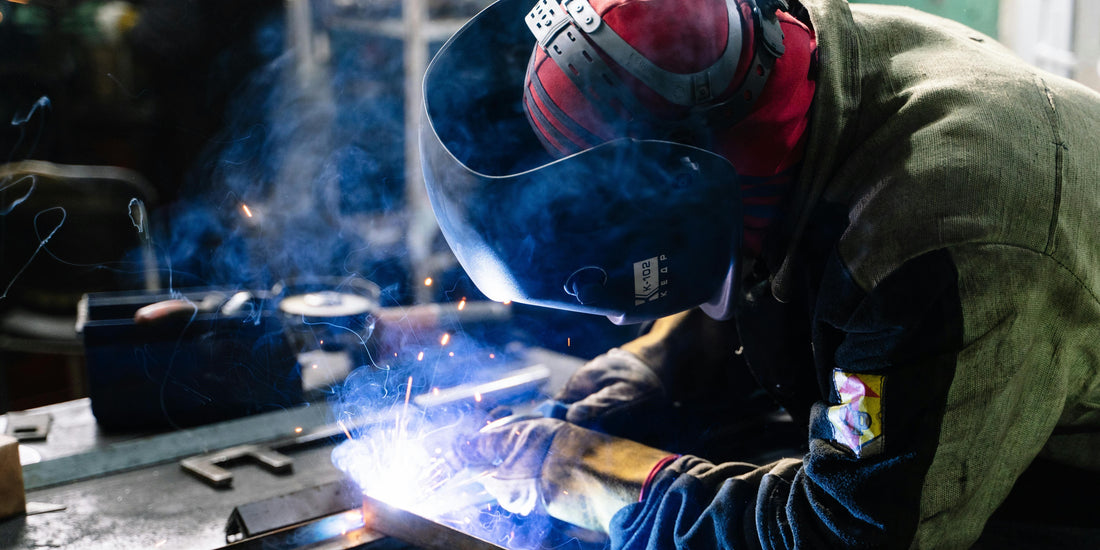
The Importance of Portable Welding Fume Extractors
Share
Welding fumes pose significant health risks to welders worldwide. Prolonged inhalation of these fumes can lead to respiratory diseases, systemic inflammation, and even cancer. Proper management of welding gases is essential to safeguarding the health of workers and surrounding personnel. This article explores why portable welding fume extractors are vital for protecting welders and operators from harmful fumes.
What Are Welding Fumes Made Of?
The composition of welding fumes depends on the materials and techniques used. Fumes are generated from the evaporation of metal particles in electrodes, filler wires, and surface coatings, which may include paints or other treatments.
For instance:
- Arc welding produces harmful gases like ozone (O3), nitrous oxides (NOx), and carbon monoxide (CO).
- Aluminum welding releases magnesium, molybdenum, and silica particles.
- Soldering may emit traces of copper, silver, and nickel.
- Stainless steel welding creates carcinogenic fumes containing oxidized chromium.
In total, welding processes can generate over 30 different toxic gases and particles.
How to Evaluate Welding Fume Exposure
Accurate assessment of welding fume exposure involves both technical and practical methods.
- Technical Evaluation: Advanced laboratory tests, such as differential mobility particle sizing and mass spectrometry, can determine particle size and chemical composition.
- Practical Evaluation: Facilities can estimate fume concentrations based on the welding process, materials used, and equipment power settings. This information is crucial for choosing the appropriate capacity of a welding fume extractor.
The Fluid Mechanics of Welding Fumes
Welding fumes behave as a mix of air and toxic particles, with velocities at the electrode tip ranging from 1 to 5 m/s. Depending on the welding intensity, proper fume extraction requires airflows between 1,500 and 12,000 CFM to ensure safety.
Without adequate extraction, fumes can circulate through HVAC systems, spreading harmful particles to other areas, including offices.
Addressing the Challenges
In most manufacturing settings, it’s impractical to redesign workflows to accommodate alternative welding techniques or materials. A cost-effective solution is to invest in portable welding fume extractors, which offer flexibility and efficiency in managing toxic fumes.
Why Use a Welding Fume Extractor?
A welding fume extractor captures toxic fumes and releases clean air back into the environment. Using a suction system, it directs fumes through specialized filters that capture microscopic particles. Internal sensors monitor air quality, ensuring safe operation.
Choosing the Right Welding Fume Extractor
Welding fumes can cause damage with exposure levels as low as 0.16 ppm of ozone over 20 minutes. For light to medium-duty applications, a portable fume extractor provides reliable protection.
- Compact Option: The FumeBoss 210 Portable Fume Extractor is lightweight yet powerful, capable of displacing up to 210 CFM with dual-motor functionality for adjustable airflow.
- For ligh to medium-duty welding, the FumeBoss 800 offers reliable performance with an efficient design tailored for smaller tasks.
- Heavy-Duty Option: For more demanding applications, the FumeBoss 1200 delivers a robust solution with up to 1,200 CFM.
FumeBoss extractors are built to combine advanced filtration technology with ease of use, ensuring maximum safety and compliance in any welding environment.
Why FumeBoss Is Your Trusted Partner
FumeBoss is a leading provider of portable welding fume extractors designed to protect workers and improve workplace air quality. With customizable solutions for every welding operation, FumeBoss helps you meet safety standards without compromising efficiency.
FumeBoss portable fume extractors are ideal for welding, soldering, grinding, and deburring. They are fully compliant with OSHA requirements, ensuring you protect both the air you breathe and yourself. Plus, enjoy free shipping across the 48 contiguous United States and Canada.
